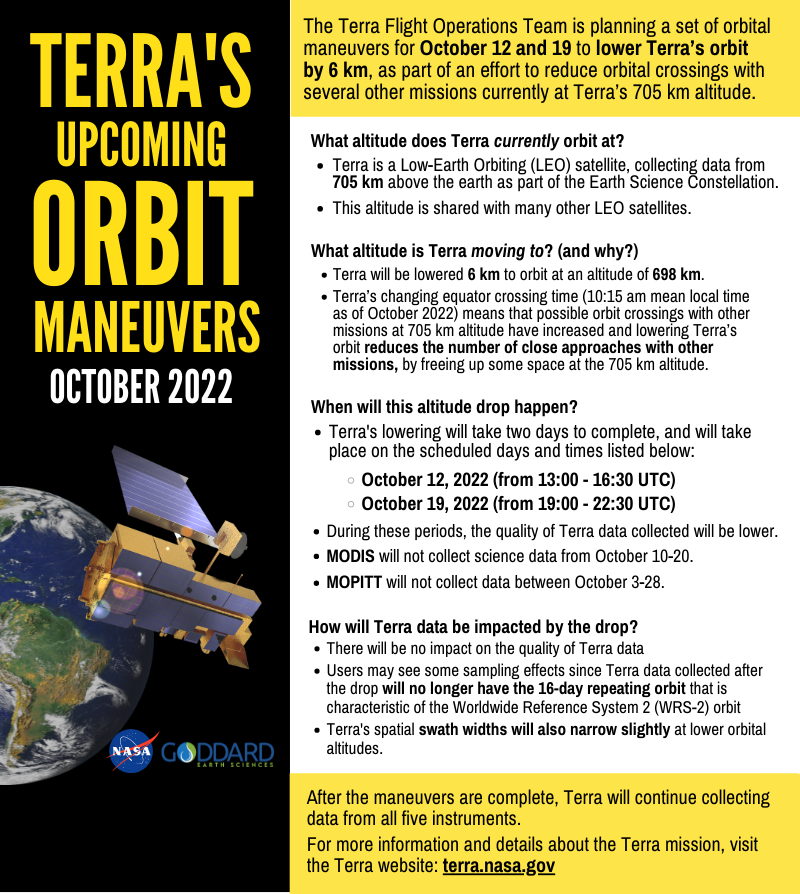Here’s a cheesy message from us to you! We hope you all have a Terra-fic Valentine’s Day, from everyone at the Terra Mission!

Here’s a cheesy message from us to you! We hope you all have a Terra-fic Valentine’s Day, from everyone at the Terra Mission!

We’re kicking off the new year with a fresh homepage layout and a new bi-weekly series of infographics that highlight important Terra information. Our first infographic highlights the continued high quality of Terra instrument data — even with Terra’s new orbit (click the link to learn more!). Feel free to share this graphic widely, and check back for more Terra facts every other week on the Terra website homepage.
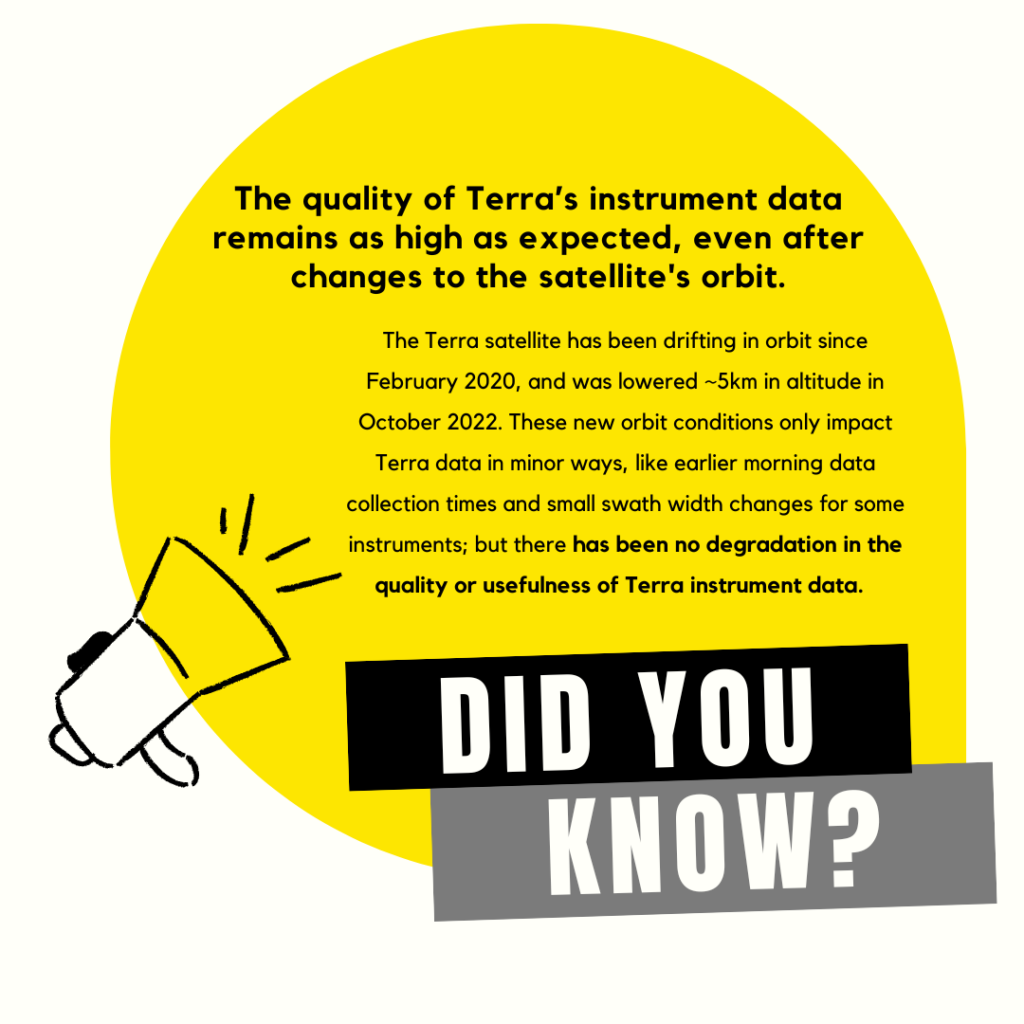
In late November, Science magazine interviewed Terra Project Scientist Dr. Kurtis Thome for an article about Terra’s orbital drift and the novel science opportunities that will come from Terra’s earlier data collection. Access the full article here.
Terra’s Lower Orbit Virtual Community Forum took place on December 8th. Thanks to everyone who attended and contributed to our discussion! Check out the full recording with links to the slide deck on our updated Terra’s Lower Orbit Virtual Community Forum webpage!
On December 18th, Terra celebrated its 23rd launch anniversary! Happy Birthday, Terra!
From undergoing an orbit lowering to headlining workshops on novel drifting data, Terra has had a big year so far! (And that’s not even accounting for the satellite’s continuous collection of high quality, earth science data, with no unintended interruptions!)
This news post will provide several important updates on recent instrument team meetings, upcoming virtual workshops featuring Terra, and an overview of three early career scientists using Terra data in their research.
Keep checking the website often for more updates and information on all things Terra!
2022 Meetings and Conferences
Upcoming Terra Workshops and Community Forums
Here’s a reminder that it’s your last chance to sign up for the virtual Terra, Aqua, and Aura Drifting Orbits Workshop that starts tomorrow, November 1-2, 2022. For more information and registration, visit the Terra website (or register here!).
On December 8th, 2022 from 12:30 PM – 3:30 PM ET, the Terra team will be hosting a virtual community forum on Terra’s recent orbit lowering maneuvers (that took place October 12th and 18th). See the graphic below for more information and a QR code linking directly to the Webex webinar registration page.
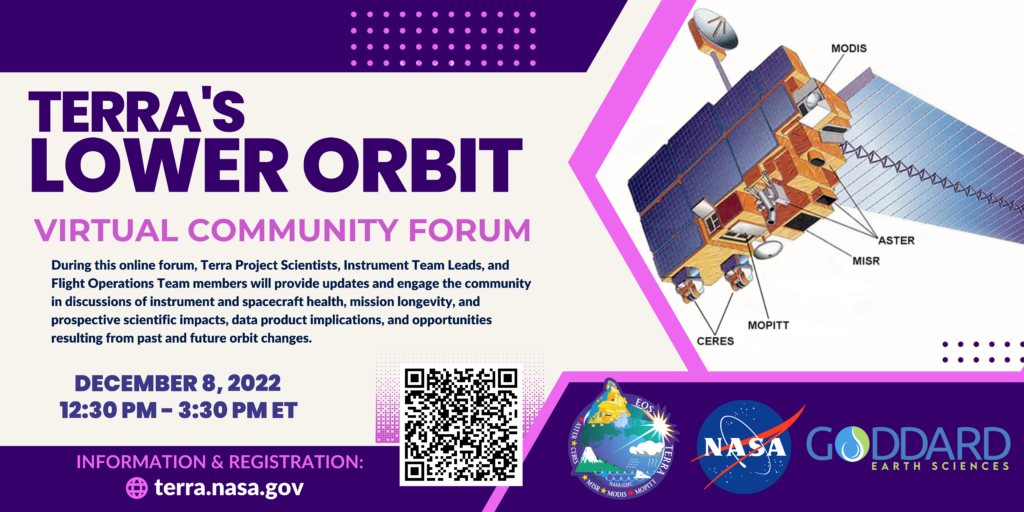
Highlighting Two Decades of Terra Talent
Last week, several NASA Early Career researchers presented their current scientific work during the 2022 Early Career Scientist Forum (full agenda linked here).
Kathleen McKee
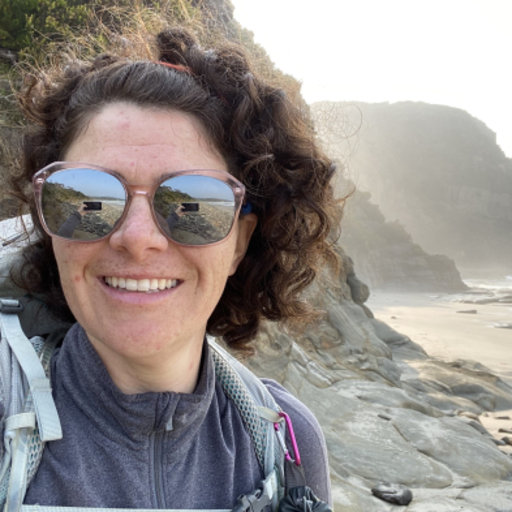
Explosive Volcanic Eruption Dynamics
Kathleen incorporates data from Terra’s Multi-Angle Imaging Spectroradiometer (MISR) instrument to analyze volcanic ash and aerosols throughout the atmospheric column.
Personal website linked here, and NASA Bio linked below.
Ryan Kramer
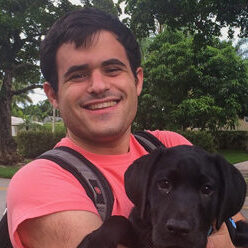
Global Radiation Budget and Modeling
Ryan uses data from the Clouds and Earth’s Radiant Energy System (CERES) instrument to improve how climate models handle future precipitation predictions.
Link to Ryan’s Early Career Scientist Spotlight, and NASA Bio linked below.
Andy Feldman
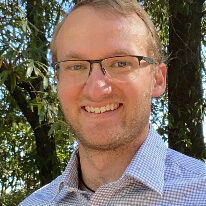
Soil – Plant – Atmosphere Interactions
Andy uses satellite products, like the Normalized Difference Vegetation Index from the Moderate Resolution Imaging Spectroradiometer (MODIS), to analyze how changes in precipitation intensity and frequency impacts plant photosynthesis.
Academic Bio linked here, and NASA Bio linked below.
The Terra Flight Operations Team is planning a set of orbital maneuvers for October 12 and 19 to lower Terra’s orbit by 6 km, as part of an effort to reduce orbital crossings with several other missions currently at Terra’s 705 km altitude. For more information, view the animation and graphic below, which are also available on the Terra website.
